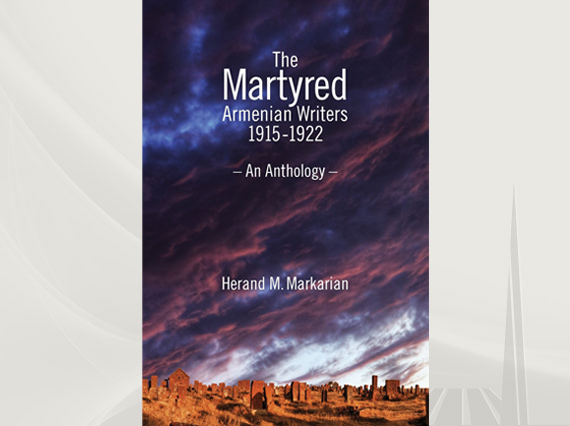Book on prominent Armenian writers killed in Genocide published

As Armenians around the world prepare to commemorate the Centennial of the Armenian Genocide, writer and playwright Dr. Herand Markarian has taken on the ambitious task of memorializing 13 of the most prominent Armenian writers who were martyred in the genocide, in a new anthology entitled The Martyred Armenian Writers 1915-1922, The Armenian Weekly reports.
Markarian’s anthology, which was published by Libra-6 Productions in New York earlier this year, begins with an introduction to Armenian history, with a particular focus on the Armenians of the Ottoman Empire and the evolution of Ottoman-Armenian literature. Markarian then gives readers a concise, yet methodical history of the Armenian Genocide through eyewitness accounts, and a chronology of events during the genocide based on the memoirs of the Very Rev. Krikoris Balakian. Markarian also dedicates a page to the different prison sites where Armenian writers and intellectuals from Constantinople were detained starting on April 24 and later murdered.
The final hours of Taniel Varoujan, Rupen Sevag, and Indra (Dikran Chrakian) are detailed through excerpts from Micheal Shamdanjian and Ohan Bedigian, two eyewitnesses to the genocide.
Markarian then provides comprehensive biographies of the 13 martyred writers—which include Rupen Zartarian, Kegham Parseghian, Yerukhan (Yervant Srmakeshkanlian), Hrant (Melkon Gurjian), and Taniel Varoujan—and highlights their literary characteristics and accomplishments.
Perhaps the biggest highlight in Markarian’s anthology is his masterful translation of the writers’ works. The excerpts are carefully selected and are wide-ranging in literary style and genre—from plays, (like Smpad Pyurad’s “The Eagle of Avarayr”) to poems (Siamanto’s “The Dance”) and both fiction (Krikor Zohrab’s The Burden of Responsibility) and non-fiction (Hrant’s Lives of Bantookht).
Markarian has done an exceptional job in presenting nearly all facets of Armenian literature at the time. The translations of the original Armenian versions are done meticulously, and are vital to the success of this book.
As we approach the 100th anniversary of the night when most of the profiled writers were arrested and subsequently murdered, Markarian’s book proves to be a fitting tribute to the martyrs of what is sometimes called our Red Sunday.




 Արևելահայերեն
Արևելահայերեն Արևմտահայերեն
Արևմտահայերեն Русский
Русский






